
|
|
Font Size:
|
||||
|
|
|
|
||||
STATISTICAL BRIEF #29:
Employee Choice in Employer-Sponsored Health Insurance Plans: 2001
Brief Statement of Findings
- Of all private-sector establishments offering health insurance, 30.3% offered more than one type of health insurance plan to employees in 2001; establishments that were part of large firms were much more likely to do so than those in small firms.
- Managed care plans, which either require employees to use a certain network of providers or have financial incentives for them to do so, were offered by over 90% of establishments offering health insurance.
- Establishments in small private-sector firms were less likely than those in large firms to have a waiting period before new employees were eligible for health insurance coverage and also had a shorter average waiting period.
Introduction
Less than one-third of all private-sector establishments offering health insurance coverage in 2001 offered more than one health insurance plan to their employees, according to the Medical Expenditure Panel Survey-Insurance Component (MEPS-IC).
Only those private-sector establishments identified as offering health insurance in 2001 (over 58%, or 3.6 million establishments) are discussed in this analysis. In 2001, 46% of establishments in small firms (fewer than 50 employees) and about 97% of establishments in large firms (50 or more employees) offered health insurance coverage. A firm includes one or more establishments under common ownership.
This Statistical Brief describes for establishments in both small and large firms:
- The extent to which establishments offer more than one health insurance plan.
- The frequency with which certain provider arrangements are offered.
- The characteristics of waiting periods for enrollment.
All of the information in this analysis comes from tables that are available on the MEPS-IC Web site (http://www.meps.ahrq.gov/). While this brief is limited to a discussion of private sector statistics, tables containing information on health insurance for state and local government employees are also available on the Web site.
Discussion
As shown in Figure 1, of all private-sector establishments offering health insurance, 30.3% offered two or more health insurance plans to their employees in 2001. Establishments in large firms were much more likely to offer multiple plans than those in small firms (56.7% and 12.5%, respectively). Eighty percent of employees in establishments offering health insurance worked for large firms (figures not shown).
It should be noted that establishments offering more than one plan may have offered different coverage to separate groups of workers, rather than giving a choice to workers within a group. For example, if salaried employees and hourly workers were offered different health insurance plans, the establishment would be counted as having two plans, even though no individual employee had a choice among plans.
While benefit provisions differ from plan to plan, each health insurance plan can be defined as belonging to one of three distinct provider arrangements:
- Exclusive provider (i.e., HMO) plans require enrollees to go to providers associated with the plan for all non-emergency care in order for the costs to be covered.
- Preferred or mixed provider (i.e., PPO) plans allow enrollees to go to any provider, but there is a cost incentive to use a particular network of providers.
- Enrollees in any provider plans may go to providers of their choice with no cost incentives to use a particular network of providers.
As shown in Figure 2, 65.4% of private-sector establishments offered preferred provider coverage to their employees in 2001; these were the most commonly offered plans. Approximately 39% of establishments offered exclusive provider coverage. Any provider plans were the type least likely to be offered (15.6%). Because some establishments offered more than one health insurance plan, the sum of the availability of the three types of plans is greater than 100%.
While preferred provider plans were offered by the majority of establishments in small private-sector firms (54.4%), they were even more common in establishments in large firms (81.6%), as shown in Figure 3. Regardless of firm size, exclusive provider plans were less common than preferred provider coverage. However, just like preferred provider plans, exclusive provider plans were offered more frequently in establishments in large firms (44.5%) than small firms (35.9%) (Figure 4).
As shown in Figure 5, some kind of managed care plan encompassing both exclusive and preferred provider coverage was almost universally available through establishments of large firms (95.7%) and was also very common in smaller employers (86.7%). Nine out of ten private-sector establishments had at least one managed care plan. In contrast, any provider plans were found at very low rates in establishments in both small firms (14.8%) and large firms (16.9%) (Figure 6).
Small and large firms differed in the existence and extent of any waiting period prior to health insurance coverage becoming effective (Figure 7). While 73.3% of establishments had some type of waiting period, they were much more common in establishments that were part of large firms (86.4%) than in those that were part of small firms (64.5%). The average waiting period was just short of 8 weeks for all establishments. The average wait for establishments in small firms was 7 weeks and for establishments in large firms was just over 9 weeks.
Definitions
Health insurance plan
A health insurance plan is defined as an insurance contract that provides hospital and/or physician coverage to an employee or retiree for an agreed-upon fee (premium) for a defined benefit period.
Establishment
An establishment is a particular workplace or physical location where business is conducted or services or industrial operations are performed.
Firm
A firm is a business entity comprising one or more business establishments under common ownership or control. A firm represents the entire organization, including the company headquarters and all divisions, subsidiaries, and branches. A firm may consist of a single-location establishment, in which case the establishment and firm are identical.
- A small firm has fewer than 50 employees (4.7 million establishments were part of small firms in 2001).
- A large firm has 50 or more employees (1.5 million establishments were part of large firms in 2001).
An employee is defined as a person on the actual payroll. Employees exclude temporary and contract workers but include the owner or manager if that person works at the firm.
About MEPS-IC
The MEPS-IC is a survey of business establishments and governments that collects information on employer-sponsored health insurance, such as whether insurance is offered, enrollments, types of plans, and premiums. The survey is conducted annually by the U.S. Bureau of the Census under the sponsorship of the Agency for Healthcare Research and Quality (AHRQ). The yearly response rate has averaged 78% for in-scope sample units. Approximately 4% of the original sample has been out-of-scope in a typical year. A total sample of 42,000 establishments was selected for the 2001 survey, prior to accounting for losses due to non-response and out-of-scope cases. For more information on this survey, see MEPS Methodology Reports 6, 8, and 10 and the MEPS-IC Technical Appendix, available at http://www.meps.ahrq.gov.
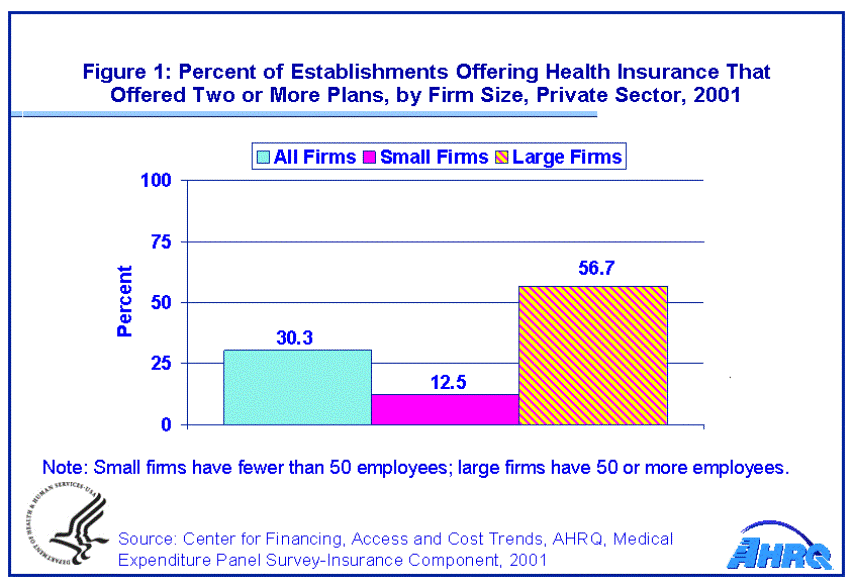 |
||||||||||||||||||||
|
||||||||||||||||||||
|
|
||||||||||||||||||||
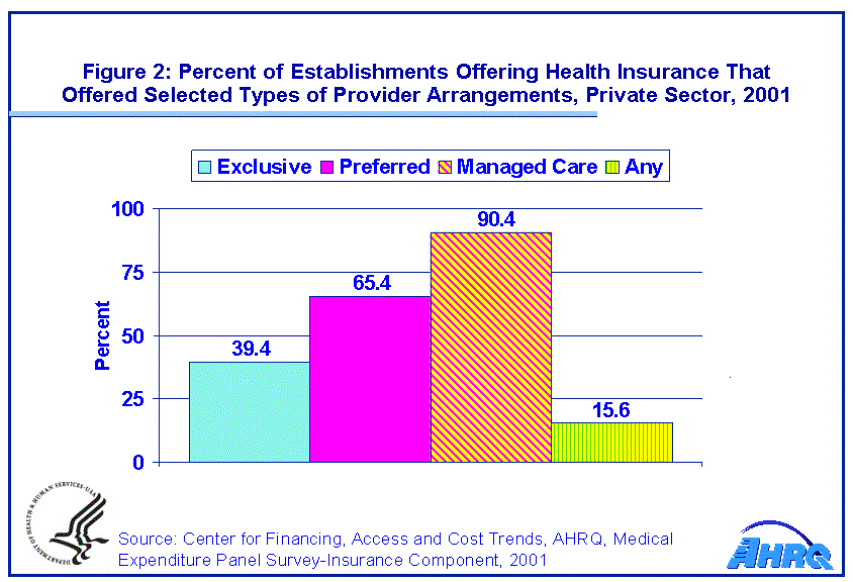 |
||||||||||||||||||||
|
||||||||||||||||||||
|
|
||||||||||||||||||||
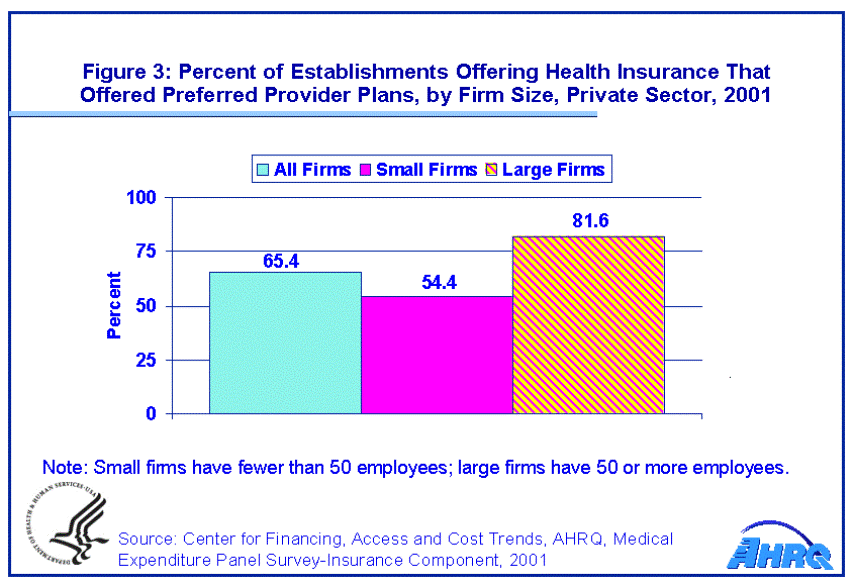 |
||||||||||||||||||||
|
||||||||||||||||||||
|
|
||||||||||||||||||||
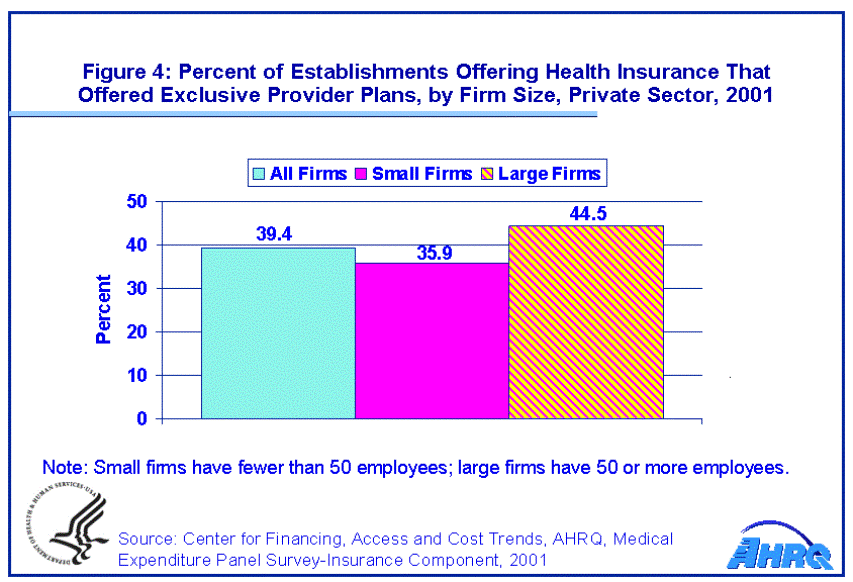 |
||||||||||||||||||||
|
||||||||||||||||||||
|
|
||||||||||||||||||||
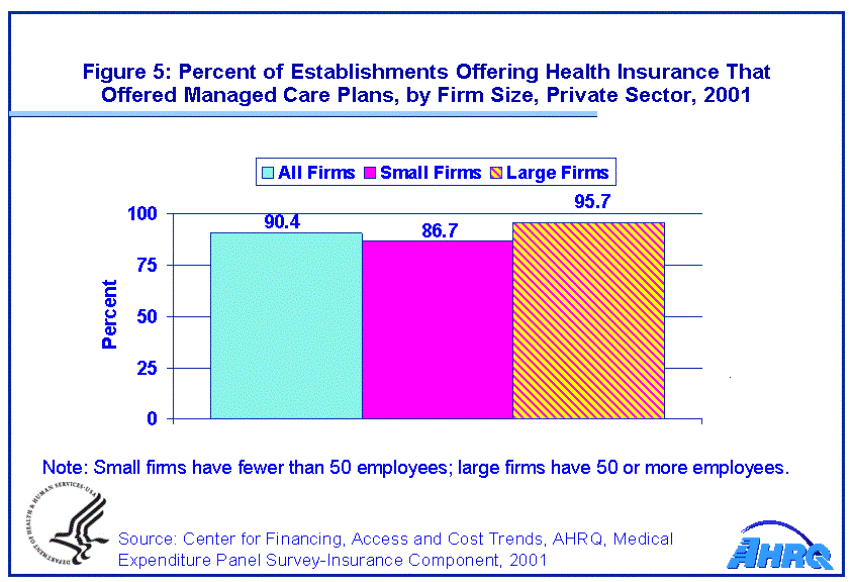 |
||||||||||||||||||||
|
||||||||||||||||||||
|
|
||||||||||||||||||||
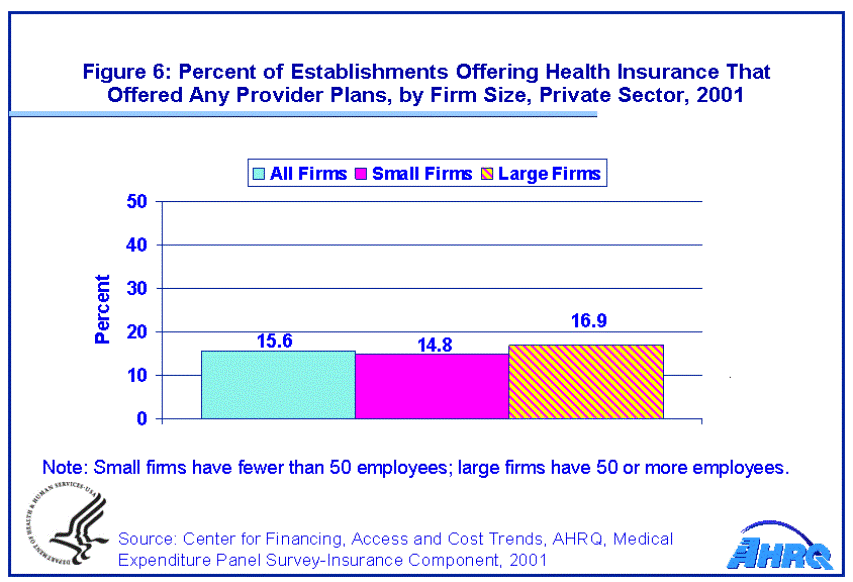 |
||||||||||||||||||||
|
||||||||||||||||||||
|
|
||||||||||||||||||||
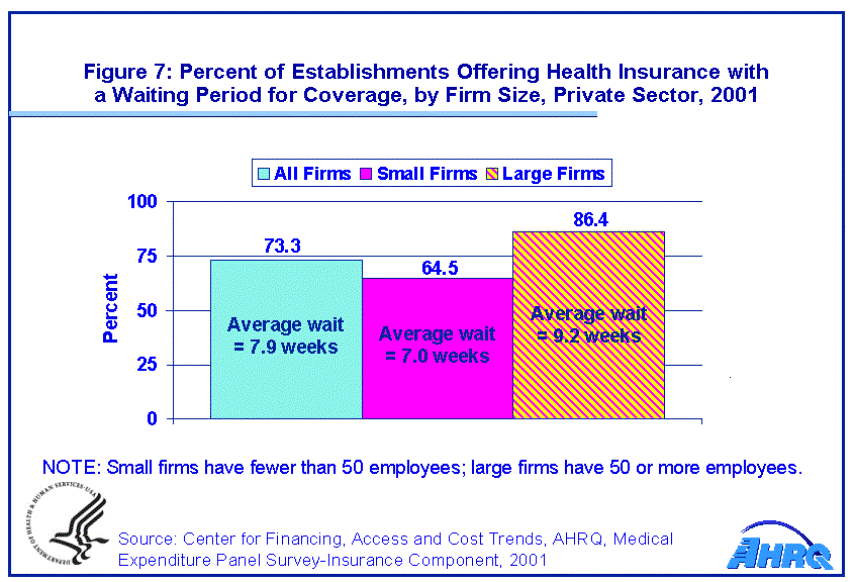 |
||||||||||||||||||||
|
||||||||||||||||||||
|
|
||||||||||||||||||||


